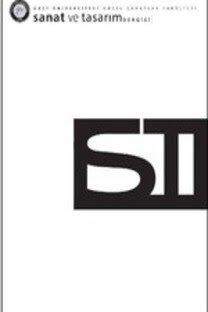MİCHAEL THALHEIMER REJİLERİNE GENEL BAKIŞ
Virtüözite aşamasına ulaşmış her sanatçının yapıtlarında o sanatçıyı tanımlayan, imzası olarak tanımlanabilecek ve yıllar içinde oluşan üslup özellikleri ayrıştırılabilir bir belirginlik gösterir. Bu özellikler o sanatçının her yapımında gelişim gösteren devinimli bir dil olarak tanımlanabilir. Bu tiyatro sanatı için de geçerlidir. Yaratıcı bir sanatçı olarak tiyatro yönetmenleri de yıllar içerisinde hem biçim hem de içerik bakımından bir anlatım dili oluştururlar. Çağdaş Alman Tiyatrosunun üretken yönetmenlerinden biri olan Michael Thalheimer da bir sanatçı olarak onu diğer çağdaş yönetmenlerden ayıran bir sahneleme diline, üslubuna sahiptir. Özellikle metin seçimi, uzam tasarımı ve oyunculuk tercihlerinden hareketle yönetmenin üslubuna ilişkin çıkarımda bulunmayı hedefleyen bu makale, Michael Thalheimer’ın tiyatro yapıtlarında ortaklık gösteren sahneleme yaklaşımlarını, dolayısıyla bir yönetmen olarak yıllar içinde oluşan üslubunu ortaya koymayı amaçlamaktadır. Yönetmenin 2000’li yıllardan itibaren sahneye koyduğu yapıtları ve bunlar içinden seçilen örneklemlerin analizinin temel yöntem olarak kullanılacağı bu makale dolaylı olarak çağdaş bir yönetmenin sahneleme yaklaşımları üzerinden günümüz tiyatro diline ilişkin fikir oluşturmayı da hedeflemektedir.
Anahtar Kelimeler:
Michael Thalheimer, Yönetmenlik, Çağdaş Sahneleme, Alman Tiyatrosu
AN OVERVIEW OF MICHAEL THALHEIMER'S WORKS
Every artist who has reached the virtuosity stage has a unique distinction in the works that define the artist, which is explicit in his style and can be distinguished over the years. These features can be defined as a dynamic language that develops in every production of that artist. As a creative artist, theater directors also create a language of expression in terms of form and content over the years. Michael Thalheimer, one of the productive directors of the Contemporary German Theater, also has a staging language and style that distinguishes him from other contemporary directors as an artist. This article aims to make inferences about the style of the director, especially from the selection of text, space design and acting choices. Also, this article aims to reveal Michael Thalheimer’s staging approaches that show partnership in theater works, hence the style over the years as a director. This article, in which the analysis of the works that the director has put on the stage since 2000s and the samples selected from them will be used as the basic method, indirectly aims to form an opinion regarding the contemporary theater language through the approaches of a contemporary director.
Keywords:
Michael Thalheimer , Directing, Contemporary Staging, German Theater,
___
- • Boenisch, P.M., (2008). “Exposing the classics: Michael Thalheimer’s Regie beyond the text”, Contemporary Theatre Review, Volume 18, 2008 - Issue 1.
- ISSN: 1308-2264
- Yayın Aralığı: Yılda 2 Sayı
- Başlangıç: 2015
- Yayıncı: Ankara Hacı Bayram Veli Üniversitesi
Sayıdaki Diğer Makaleler
İSMAİL TUNALI'NIN SANAT ELEŞTİRİSİ ANLAYIŞI
MİCHAEL THALHEIMER REJİLERİNE GENEL BAKIŞ
BÜYÜK BRİTANYA MÜZE KOLEKSİYONLARINDAKİ BİLİNEN HAYVAN FİGÜRLÜ ÇANAKKALE SERAMİKLERİ
TÜRK KÜLTÜRÜNDE GÜVERCİNLİK VE KUŞ EVLERİ VE GÜNÜMÜZE YANSIMALARI
SOYUT AMA NESNEL SANAT: MİNİMALİZM
DOĞA-KENT-SANAT İLİŞKİSİ BAĞLAMINDA EYMİR GÖLÜ'NDE ARAZİ SANATI UYGULAMALARI
MAVİ BAKIŞIN ARDINDAKİ GİZ - KAYIHAN KESKİNOK
Huriye AYDIN ÇELİKCAN, Vedat ÖZSOY
CUMHURİYET MODERNLEŞMESİNİN PERİFERİDEKİ TANIKLARI; GİRESUN KAMU YAPILARI
Selin KARAİBRAHİMOĞLU, Özgür DEMİRKAN
16. YÜZYIL İZNİK'TE ÜRETİLEN KAPALI FORMLU SERAMİKLER
